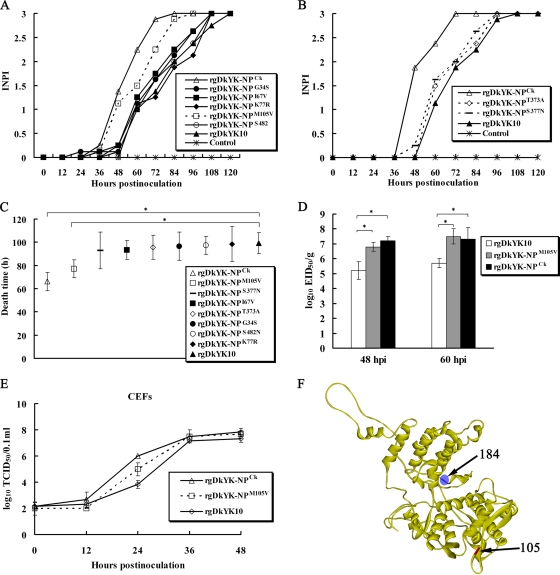FIG. 7.
Identification of critical amino acids in NP responsible for high pathogenicity in chickens by comparison of pathogenicity of seven DkYK10 mutants with a single amino acid substitution in NP. (A and B) Each of eight chickens were inoculated with each of the NP mutant viruses (106 EID50/chicken), and their INPI kinetics were compared with those of rgDkYK-NPCk and rgDkYK10 as described in the legend to Fig. 1. (C) The MDTs of chickens after inoculation with each of seven NP mutant viruses (106 EID50/chicken) are indicated. The values are the mean ± standard deviation for the eight chickens in each group. *, significant difference (P < 0.05) compared to rgDkYK10. (D) Each of three chickens was inoculated intranasally with rgDkYK-NPCk, rgDkYK-NPM105V, or rgDkYK-10 (106 EID50/chicken). Virus infectivity titers in lungs harvested at 48 and 60 hpi were determined with embryonated chicken eggs and compared among the virus groups. (E) The growth kinetics of rgDkYK-NP105V in CEFs was compared with those of rgDkYK-NPCk and rgDkYK10. CEFs were inoculated with each recombinant virus at an MOI of 0.001, and virus titers of the culture supernatants were determined at each time point using CEFs and expressed as an average result from three wells per sampling point. (F) The amino acid residue at position 105 on the body domain of the NP crystal structure is shown in red, while that at position 184 in the RNA binding domain of NP that relates to pathogenicity in chickens is plotted in blue (52).

